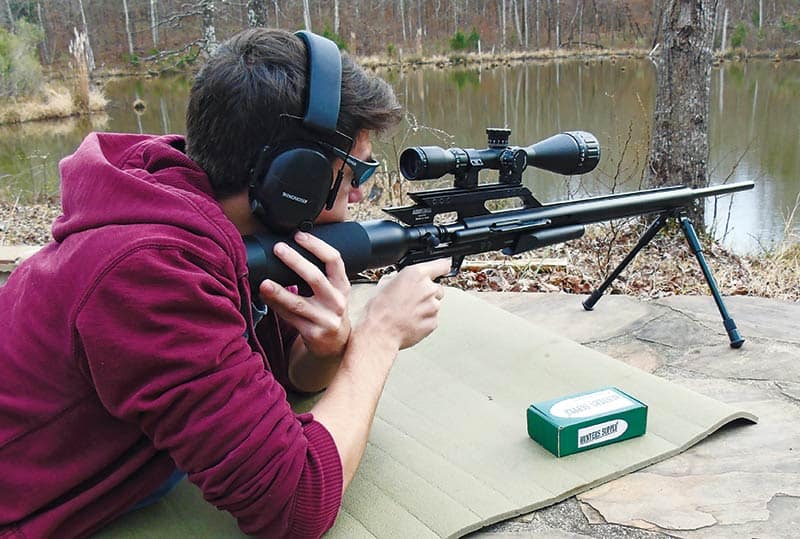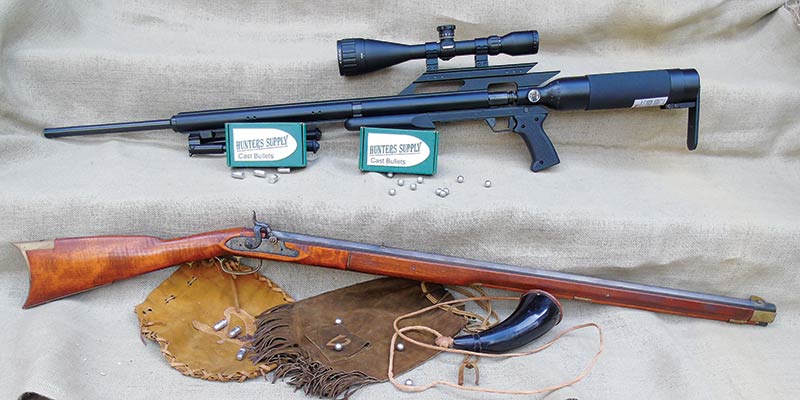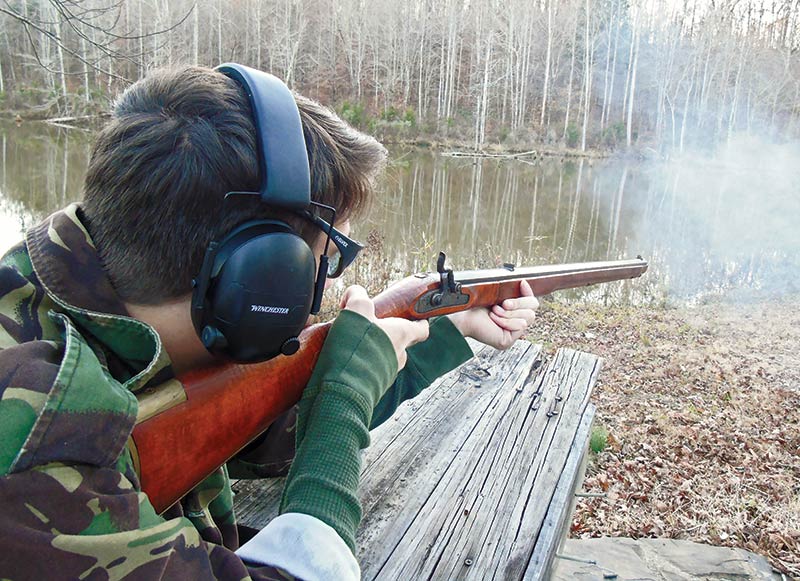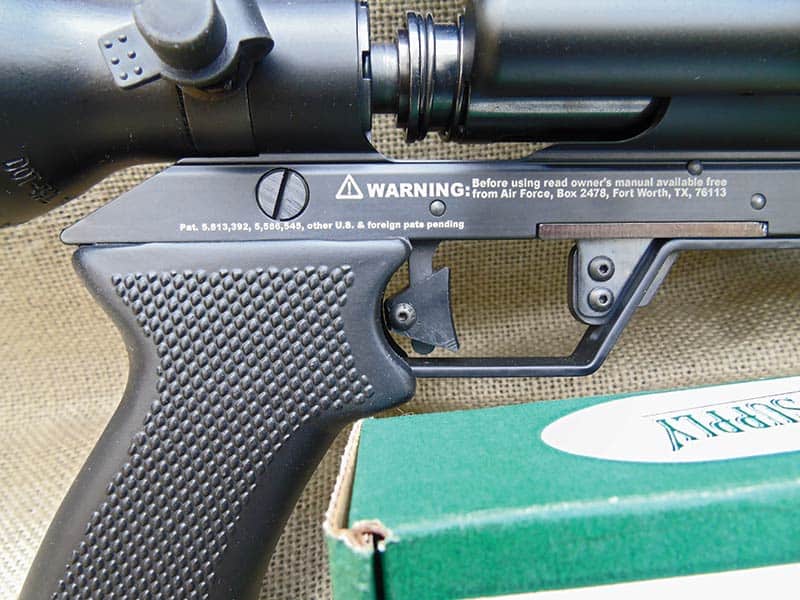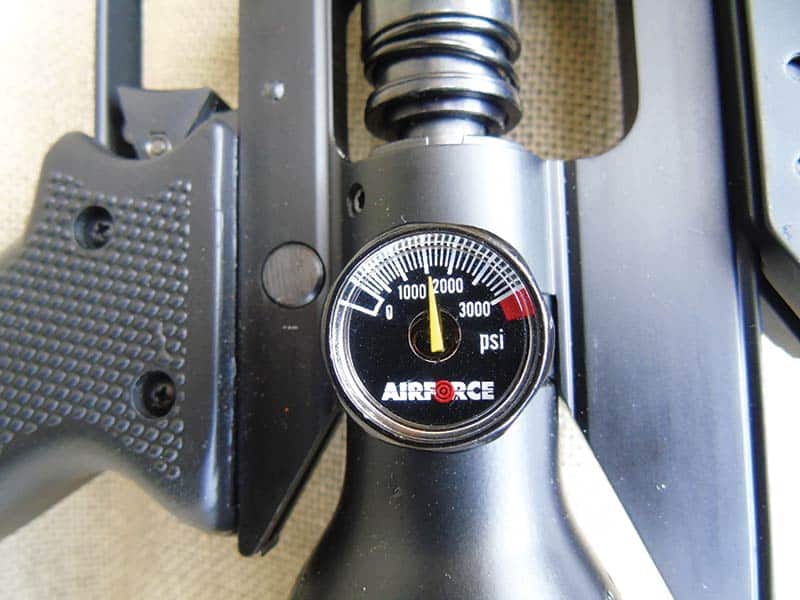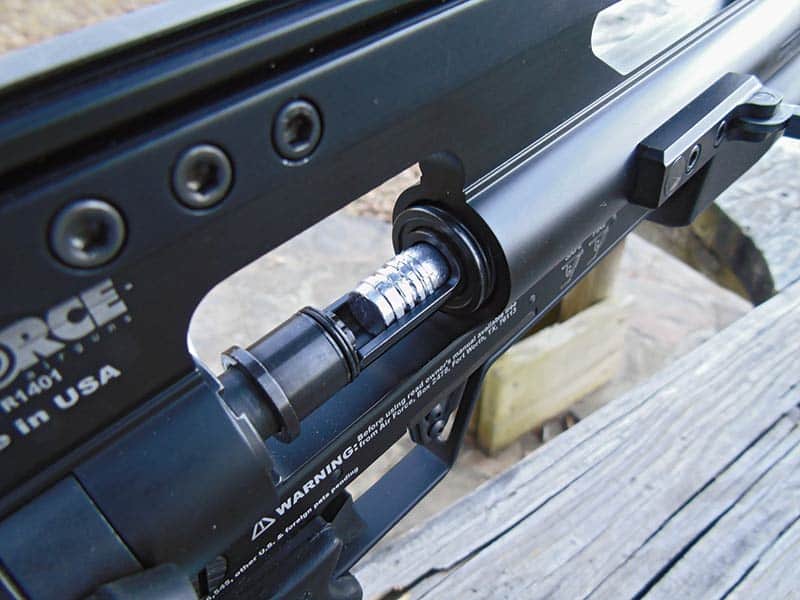Airforce Texan Vs. Kentucky Long Rifle
Arming The “Voyage of Discovery” In The Information Age
The AirForce Texan pre-charged air rifle is a serious hunting, shooting, and survival tool. Packing up to 500 ft-lbs of energy per shot while remaining delightfully accurate, the Texan brings centerfire performance to the world of airgunning.
Meriwether Lewis and William Clark embarked on their 2-year Voyage of Discovery in 1804 equipped with the finest weapons and equipment the state of the art could provide. Imagine how we might outfit an expedition to Mars today and you appreciate the parallel. Everything on a spaceship would represent the very flower of modern engineering prowess. So it was in 1804.
On March 14, 1803, Henry Dearborn, then-Secretary of War, directed Joseph Perkins, the superintendent of the Harpers Ferry Armory, to “make such arms and iron work, as requested by Captain Meriwether Lewis.” Lewis subsequently requested 15 flintlock rifles with slings and sundry spare parts.
On July 8th of the same year Captain Lewis wrote to President Jefferson, “Yesterday I shot my guns and examined the several articles which have been manufactured for me at this place; they appear to be well-executed.”
Each man’s rifle had to have a tompion, or barrel stopper, a device resembling a wooden clothespin and served to keep out snow, mud, rain, and dirt. They also included a “cow’s knee,” a rawhide cover actually harvested from the skin over a cow’s knee, to keep the lock, pan, and frizzen dry and free of contaminants. So equipped, these weapons were deemed adequate for the task of arming and feeding expedition members during their trek across some of the world’s most untamed wilderness.
It was a stimulating exercise to run these two disparate rifles side by side. Both guns fire identical projectiles at comparable velocities. However, the modern-day AirForce Texan is much more precise while remaining infinitely tidier. Maintenance of the Texan involves little more than wiping it off at the end of the day.
In addition to these fairly conventional arms, Lewis and Clark brought along a state-of-the-art .46-caliber Girardoni repeating air rifle. Designed by Bartholomaus Girardoni in 1779, this remarkable weapon included a 22-shot gravity-fed magazine and typically managed about 30 rounds per charge of air. The rifle weighed about what a comparable musket might and required around 1,500 strokes on a hand pump to charge its air reservoir. Muzzle velocity hovered around 450 feet per second and the weapon’s maximum effective range reached out to 150 yards. However, it could be fired as quickly as balls might be indexed into the breach, an extraordinary feat for its day. Expedition members armed with the Girardoni frequently put on firepower demonstrations that awed onlookers. A repeating rifle not using powder or producing smoke was otherwise unimaginable for folks of this era.
The Girardoni was referred to as a Windbüchse or “wind rifle” in the original German. At a time when rifled barrels were the next great thing in small arms technology, this air rifle was considered sufficiently indispensable to justify inclusion in the loadout. It has taken 230 years for industry to improve upon the remarkable innovation.
Contemporary airguns have come a long way since the first no-frills spring-action Daisy I bought for $7 when I was a second grader. In contrast to the relatively anemic plinkers of my youth, pre-charged air guns from AirForce are legitimate survival tools suitable for hunting, recreational target work and personal defense.
The .45 caliber Kentucky Rifle is a classic American smoke pole. Like all black powder weapons, however, it is laborious to load, filthy to run, and fairly miserable to clean.
The Contestants
The new AirForce Texan is a .45-caliber air rifle launching manly bullets at manly velocities. The committed airgunner could handily use this gun to harvest deer or pigs at reasonable ranges. Cut from Information Age materials to a thoroughly modern standard of workmanship, the Texan is a precision tool. Lothar Walther barrels offer remarkable accuracy and, as the 34-ounce trigger trips a valve rather than a sear, the firing sequence is remarkably precise. An adjustment wheel on the side of the rifle allows power selection at the bench. An airgunner committed to his craft can work up loads at the firing point to optimize accuracy and downrange thump.
The Texan is a single-shot and compound leverage allows the cocking lever to prime the action painlessly. AirForce produces their own line of scopes, elevated sight rails, and bipods to support their guns.
AirForce produces a hand pump and it was this method that powered Lewis and Clark’s Girardoni. However, it would take an age to service the 490cc reservoir on the Texan in this manner. Despite the admittedly great exercise this might provide, I opted for something easier.
Typical air compressors from your local home supply store do not produce anywhere near the pressure required to feed these guns. A charge for the Texan’s reservoir is on the order of 3,000 psi. The only reasonable way to feed such a beast is via a parent tank. I bought a new scuba tank at Amazon for less than $200 delivered. Dive shops typically charge about $10 to pressurize it for you. A single fill will keep you dangerous for a quite a while.
I opted for a .45 caliber caplock Kentucky rifle as a substitute for the flintlocks Lewis and Clark used. There is some debate as to exactly what sorts of rifles they took on their Voyage of Discovery and in all likelihood they were .50 or .54 caliber guns. In this case, however, I wanted a black powder platform firing essentially the same round as the Texan.
The rifle itself began as a raw CVA kit I received as a Christmas gift when I was 13 years old. I finished it myself with hand tools and Tung oil in our garage. The gun has rendered yeoman service for some 37 years now. As is the case with all black powder weapons, the gun just reeks cool but is a pain to load and a bear to clean.
The crisp 34-ounce trigger cracks a valve rather than tripping a sear and remains remarkably crisp as a result. The safety is oriented in the front of the triggerguard in the manner of the M1 Garand and resets itself automatically after each shot.
While the AirForce Texan might theoretically be charged using a manual pump, the size of the reservoir and the power of the rifle make this an unreasonable option. A scuba tank or dedicated carbon fiber fill tank is easy to use and fairly portable.
A built-in pressure gauge allows the shooter to keep track of the amount of air remaining. Will got between 3 and 6 shots per charge dependent upon bullet weight and selected velocity. Velocity adjustments may be undertaken painlessly at the bench. In so doing loads can be optimized for either accuracy or downrange power.
The AirForce Texan is breezy to operate. Open the action and drop a round on the loading tray. Close the action, release the safety, and go. Compared to its black powder counterparts it is maintenance-free.
The rifle itself began as a raw CVA kit I received as a Christmas gift when I was 13 years old. I finished it myself with hand tools and Tung oil in our garage. The gun has rendered yeoman service for some 37 years now. As is the case with all black powder weapons, the gun just reeks cool but is a pain to load and a bear to clean.
The Kentucky Long Rifle was itself an indispensable piece of Americana. Captain John G.W. Dillin penned the seminal description of the weapon in 1924. He does a markedly better job than I ever could, saying, “From a flat bar of soft iron, hand forged into a gun barrel; laboriously bored and rifled with crude tools; fitted with a stock hewn from a maple tree in the neighboring forest; and supplied with a lock hammered to shape on the anvil; an unknown smith, in a shop long since silent, fashioned a rifle which changed the whole course of world history; made possible the settlement of a continent; and ultimately freed our country of foreign domination. Light in weight; graceful in line; economical in consumption of powder and lead; fatally precise; distinctly American; it sprang into immediate popularity; and for a hundred years was a model often slightly varied but never radically changed.”
Hunter’s Supply provided our projectiles and we chose standard 143-grain pure lead balls as well as massive 350-grain cast bullets to use in our comparison. Hunter’s Supply is 1-stop shopping for all manner of bullets for both black powder weapons and air rifles of most any caliber.
The .45-caliber Kentucky Long Rifle exudes an almost sensual grace. Markedly front heavy yet interfacing with the human form unnaturally well, the Kentucky rifle is a joy to shoot. However, projectiles can be a challenge to get down a fouled bore, particularly if patched. It was this laborious rate of fire that drove Lewis and Clark toward their revolutionary air rifle in the first place.
Reloading drudgery notwithstanding, the .45-caliber Kentucky rifle offers modest recoil and satisfactory accuracy. The entire reloading process consumes perhaps a minute between shots so long as everything goes smoothly. As is the case with all black powder guns, thorough cleaning is a must lest your snazzy antique smoke pole rust solid.
The AirForce Texan was a fresh and new experience for me despite having spent a literal lifetime squeezing triggers. The first two impressions I got upon firing are it is loud and there is some significant recoil. While neither round quite broke the sound barrier, you will still want earplugs. Additionally, while recoil is far from painful, it is clearly present. The Texan is an unambiguously serious gun.
We got maybe half a dozen shots from the 490cc onboard tank with our roundballs while we typically fired two or three of the heavier 350-grain pills before velocity started falling away. Refill from the parent tank requires maybe 10 seconds but the onboard version is entirely adequate for typical hunting use. Cleaning any black powder gun properly requires hot water, elbow grease, and time. Maintaining the Texan air rifle amounts to little more than wiping it off. Both guns were sufficiently accurate and spunky to remain utterly lethal well past a football field. In both cases I felt more than adequately equipped to harvest whitetail deer or pigs.
In the final analysis the Texan gleams today for the same reason the Girardoni performed so well 200 years ago. Learning the nuances of serious airgunning was a treat even for an otherwise seasoned shooter like me. A little trigger time behind the AirForce Texan reminds us why Lewis and Clark went to the trouble to lug an air rifle all the way across the country back in 1804.
Connecticut Valley Arms (CVA)
1270 Progress Center Avenue, Suite 100
Lawrenceville, GA 30043, (770) 449-4687
www.cva.com
Hunter’s Supply (no phone or snail mail),
www.hunters-supply.com
